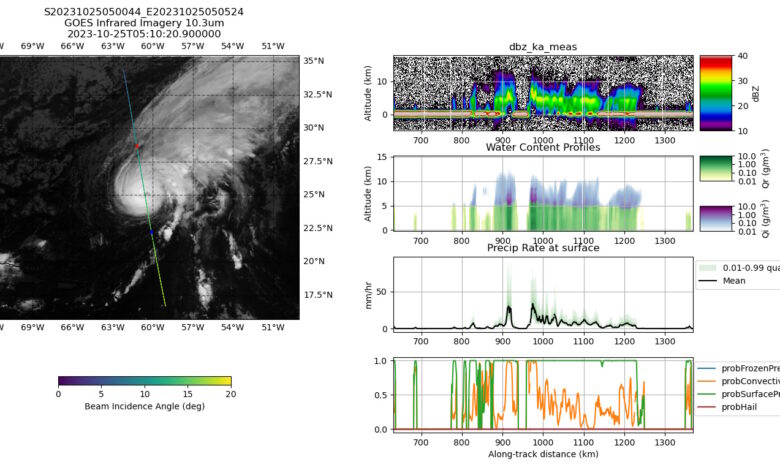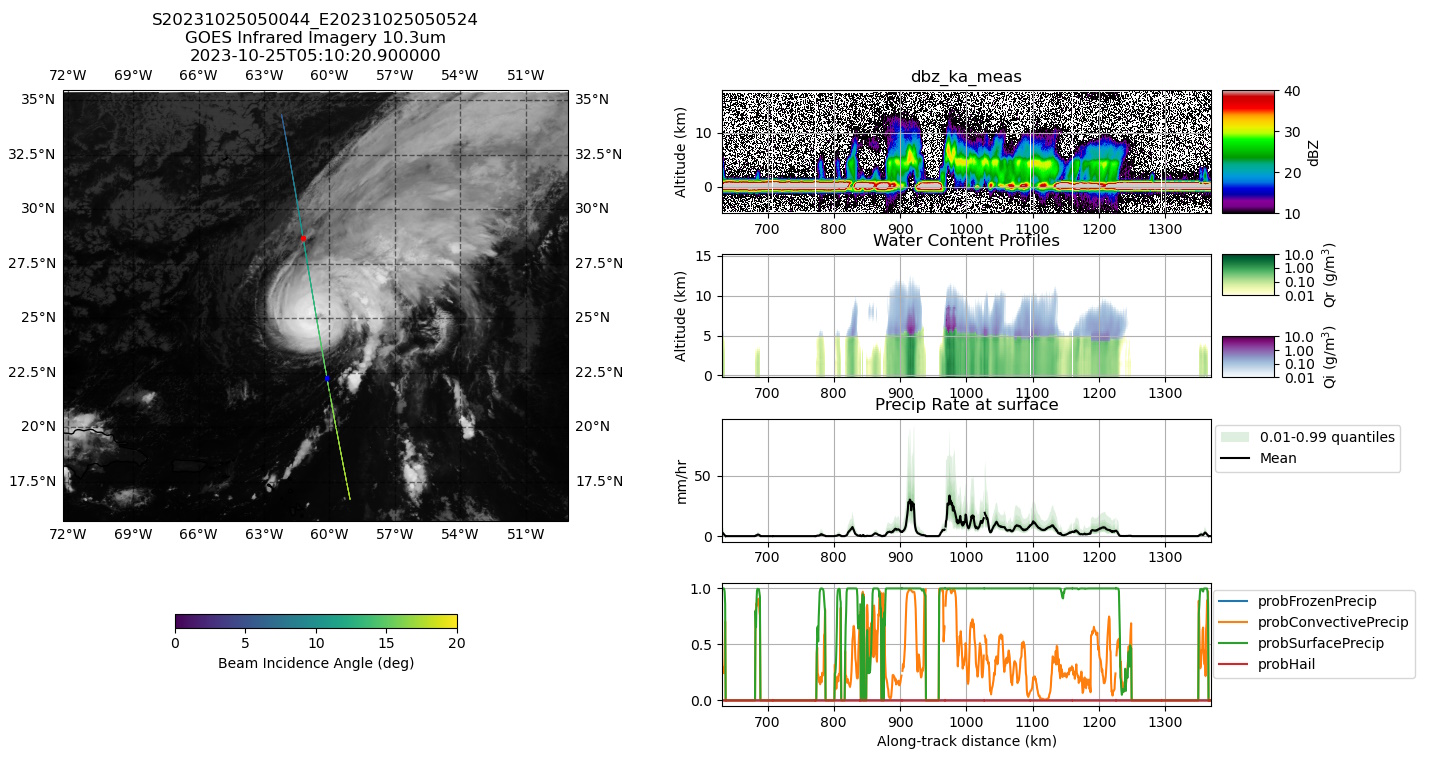Tomorrow.io’s radar satellites use machine studying to punch effectively above their weight

[ad_1]
These of us fortunate sufficient to be sitting by a window can predict the climate simply by trying exterior, however for the much less privileged, climate forecasting and evaluation is getting higher and higher. Tomorrow.io simply released the results from its first two radar satellites, which, due to machine studying, develop into aggressive with bigger, extra old-school forecasting tech on Earth and in orbit.
The corporate has been planning this mission because it was referred to as ClimaCell, again in 2021, and the outcomes being launched right this moment (and formally introduced at a meteorology convention quickly) present that their high-tech method works.
Climate prediction is complicated for lots of causes, however the interaction between high-powered however legacy {hardware} (like radar networks and older satellites) and fashionable software program is an enormous one. That infrastructure is highly effective and worthwhile, however to enhance their output requires lots of work on the computation facet — and sooner or later you begin getting diminishing returns.
This isn’t simply “is it going to rain this afternoon” however extra complicated and necessary predictions like which path a tropical storm will transfer, or precisely how a lot rain fell on a given area over a storm or drought. Such insights are more and more necessary because the local weather modifications.
Area is, in fact, the plain place to speculate, however climate infrastructure is prohibitively huge and heavy. NASA’s Global Precipitation Measurement satellite tv for pc, the gold normal for this area launched in 2014, makes use of each Ka (26-40 GHz) and Ku (12-18 GHz) band radar, and weighs some 3,850 kilograms.
Tomorrow.io’s plan is to create a brand new space-based radar infrastructure with a contemporary twist. Its satellites are small (solely 85 kilograms) and use the Ka-band solely. The 2 satellites, Tomorrow R1 and R2, launched in April and June of final yr and are simply now, after a protracted interval of shake-out and testing, starting to indicate their high quality.
In a collection of experiments that the corporate is planning to publish in a journal later this yr, Tomorrow claims that with just one radar band and a fraction of the mass, their satellites can produce outcomes on par with NASA’s GPM and ground-based systems. Throughout quite a lot of duties, the R1 and R2 satellites had been in a position to make equally correct and even higher and extra exact predictions and observations as GPM, and their outcomes additionally tallied carefully with the bottom radar information.

Examples of information from the R1 and R2 satellites.
They accomplish this although using a machine studying mannequin that, as Chief Climate Officer Arun Chowla described it, acts as two devices in a single. It was educated on information from each of the GPM’s radars, however by studying the connection between the statement and the distinction between the 2 radar indicators, it could actually make an analogous prediction utilizing only one band. As their weblog submit places it:
The algorithm is educated with these dual-frequency-derived precipitation profiles however solely makes use of the Ka-band observations as enter. Nonetheless, the complicated relationship between the reflectivity profile form and precipitation is “discovered” by the algorithm, and the total precipitation profile is retrieved even in instances the place the Ka-band reflectivity is totally attenuated by heavy precipitation.
It’s an enormous success for Tomorrow.io if these outcomes pan out and generalize to different climate patterns. However the concept isn’t to interchange the U.S. infrastructure — GPM and the bottom radar community are right here for the lengthy haul and are invaluable belongings. The actual drawback is that they will’t be duplicated simply to cowl the remainder of the world.
The corporate’s hope is to have a community of satellites that may present this stage of detailed prediction and evaluation globally. Their 8 deliberate manufacturing satellites shall be greater — round 300 kg — and extra succesful.
“We’re engaged on offering actual time precipitation information wherever on the earth, which we imagine is a recreation changer within the area of climate forecasting,” Chowla stated. “In that respect we’re engaged on accuracy, world availability, and latency (measured because the time between the sign being captured by the satellite tv for pc and the information being accessible for ingesting into merchandise).”
They’re additionally making the inevitable information play, with a extra detailed set of orbital radar imagery to coach their very own and different methods on. For that to work, they’ll want tons extra information, although — they usually plan to choose up the tempo gathering it with extra satellite tv for pc launches this yr.
[ad_2]
Source link




